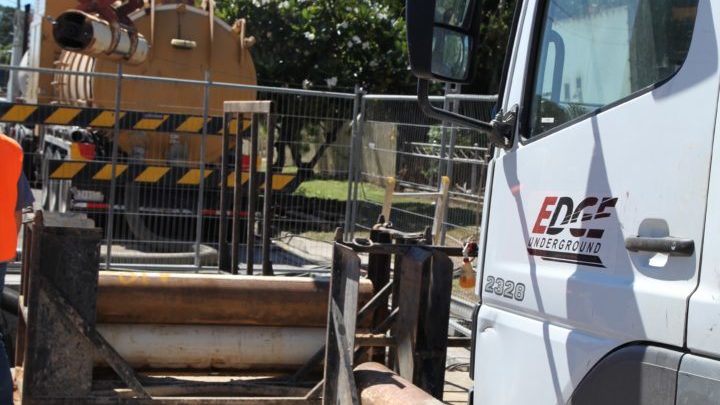Time and cost are among the top driving factors of trenchless pipeline installations; they are also among the first to be blown out if something goes wrong during an installation. This is why risk mitigation is extremely important. By managing the risks that could cause a problem to a project, a contractor will have a higher chance of avoiding any problems, or being able to deal with them quickly and efficiently, so that the project remains on time and on budget. So what can contractors do to mitigate risks, and what should project managers look for in a contractor?
What it comes down to is versatility. If a contractor is using a machine that can work with a wide range of ground conditions, or offer a variety of pipes and configurations, they will be able to use the right technique and materials to match a projects requirements. The main problem here is that the Vermeer AXIS laser guided boring system is the only microtunnelling system on the market that is able to provide versatility without compromising on productivity and accuracy.
Here’s a few ways in which versatile equipment can reduce risk on trenchless pipeline projects.
Pilot lines
The main benefit of pilot lines is that they allow the contractor to confirm ground conditions at a site before the installation begins. While geotechnical information should be provided before a project, it is not uncommon for there to be discrepancies between the information provided and the actual conditions at the site.
Unlike traditional pilot microtunnelling systems which utilise the displacement method, the Vermeer AXIS uses vacuum extraction. Because vacuum extraction cuts and extracts as it moves, there is little to no influence on the ground and any assets surrounding the installation.
As well as not impacting surrounding infrastructure, this has the benefit that the microtunneller can visually inspect the ground conditions, and adapt the drilling approach to suit site conditions and reduce the chance of deviation in the installation line or other events that can affect the success of the final pipeline.
Vermeer AXIS is a good performer across all ground types and it can be setup to suit whatever the ground condition is. This gives contractors the ability to determine a better setup for the machine to ensure an effective and efficient installation.
Changing ground conditions
While the pilot line can provide a good idea of the prevailing ground conditions, it is only a snapshot, and especially for longer installations there is still a chance of substantial changes to ground conditions further down the line.
If ground conditions change suddenly to the point that the contractor can no longer proceed with the line and a machine with a non-retractable drill is being used, there is nothing that can be done but to stop and dig up the drill head from above. This is less than ideal as extra time and costs will be required.
With the Vermeer AXIS, there is a higher chance of ground changes being picked up before installation begins, and if there is a substantial change, the drill head can be retracted and changed out with no fuss so the project can remain on time and budget.
Choosing the pipe
Pipe diameter and material also play a role in project costs and risk minimisation. For those using a traditional microtunnelling machine, custom size drill heads will be required to install different sized pipes. This can become expensive, especially when it is a size the contractor may not use again.
The Vermeer AXIS eliminates the need for multiple sized drill heads as only one is needed to complete the pilot line. Once the pilot line is completed, it’s just a matter of changing the size of the reaming tool to achieve a range of diameters, depending on the installation in question. Importantly, the cost of these reaming tools is relatively inexpensive, enabling cost-efficient installations from 300–600mm range, with up to 900mm also possible.
This versatility is due to the fact that it can install pipe via either the pilot and pull back method, or the jack and ream method.
With the jack ream method, when the drill head reaches the exit pit, it is replaced with a reaming tool which can be attached to the product pipe when pulling back, or in the jack back method, the pipe would effectively push the pilot line back out during the reaming process.
The other benefit of the AXIS system is its combine use of a pilot line and vacuum excavation means that in self supporting ground the force on a pipe would only be the weight of the pipe itself.
This means that unlike traditional microtunnelling methods, contractors using the AXIS system are able to install a wide range of pipe types — including both rigidly constructed, as well as fusible and restrained joint product pipe — based on factors such as existing ground conditions, costs, traditional preference, and matching with existing infrastructure.
It all comes down to risk minimisation
These factors mean that the risks associated with trenchless pipeline installations are greatly reduced when microtunnelling using the Vermeer AXIS system.
The versatility of the machine and its use of a pilot line and vacuum excavation means that projects will be completed on time and budget without the worry that an unexpected problem due to ground conditions will occur during the drill.

